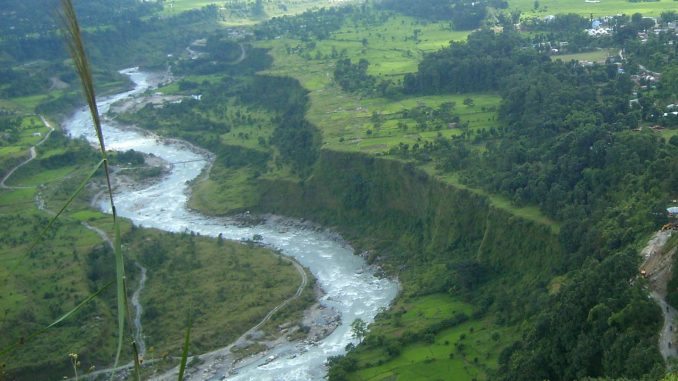
Recentfusion.com–Nepal’s rivers are being polluted day by day. Such pollution happens generally when they passes through the urban areas. The Seti, one of the major rivers of Nepal, which passes through the heart of Pokhara, a tourist capital of Nepal, is now in the verge of major pollution.
Environmentalists have warned that the Seti is changing into another Bagmati, one of the most polluted Nepali rivers. “We have to bring awareness programs to save the Seti,” says Megh Ale, founder president of Nepal River Conservation Trust. The Seti River originates from Mount Annapurna and follows the jungle and hilly areas before entering the Pokhara valley. Most of the people who live along the banks of the Seti are charged of throwing all their garbage directly into the river.
Some of them even use the Seti as their toilets’ septic tank. Sewage has also been dumped into this river. But the Pokhara Sub metropolitan Office (PSMO) hardly cares about it; the office itself has made a public toilet in the bank of Seti and dumps its sewage there as well. The office says it has no plans to save Seti due to lack of money. Though PSMO has been running a landfill site to manage the city’s garbage, many people still throw their waste into the Seti.
According to Ananta Koirala, spokesperson of the PSMO, tons of garbage is produced every day in the city, but only few types of garbage are carried to the landfill site on the south of city. “People should inform themselves about garbage management,” he said, noting that people also can produce compost from garbage. Seti is very famous as an important tourist destination. Almost all tourists who arrive in Pokhara reach the Seti to see its natural beauty.
The main specialty of Seti is its deep gorges. These are really amazing parts of the Seti that attract the tourists. People who come to see the Seti unfortunately have to face the bad smells of garbage. We can see the people pinching their noses to avoid bad smells. But PSMO has not so far taken any action against the people who throw their garbage into the Seti. However, according to Koirala, the office has the right to impose fines up to Rs15,000 (US$210) on people who pollute the river. According to Ashim Banstola, whose house is on the banks of the Seti River, the PSMO should support them financially to build the Septic tanks for their toilets and should create programs to raise awareness.
The river holds equal importance from the religious point of view. People take holy bath in this river on different occasions. People from the Brahmin caste and some other families use the Seti and its banks for funeral ceremonies. Seti creates a lake in the summer season at Ramghat. In the south part of Ramghat, Seti flows underground, so on the upper part the water remain as a lake. The river is 70 to 150 meters deep from the soil surface. Its width is 4 meters to 900 meters. Seti is a major branch-river of the Gandaki river system, one of the three largest river systems in central Nepal. The Gandaki system consists of the Kaligandaki, Budhigandaki, Trishuli, Marsyangdi, Seti, Madi and Daraundi. The Seti is also famous for white- and warm-water rafting. There is a city named Damauli, about two hours drive south from Pokhara and five hours from Kathmandu, from where one can start two days’ rafting to the Gaighat. We can use Seti and its surroundings for other adventure activities, like bungee-jumping and water sports.

Leave a Reply